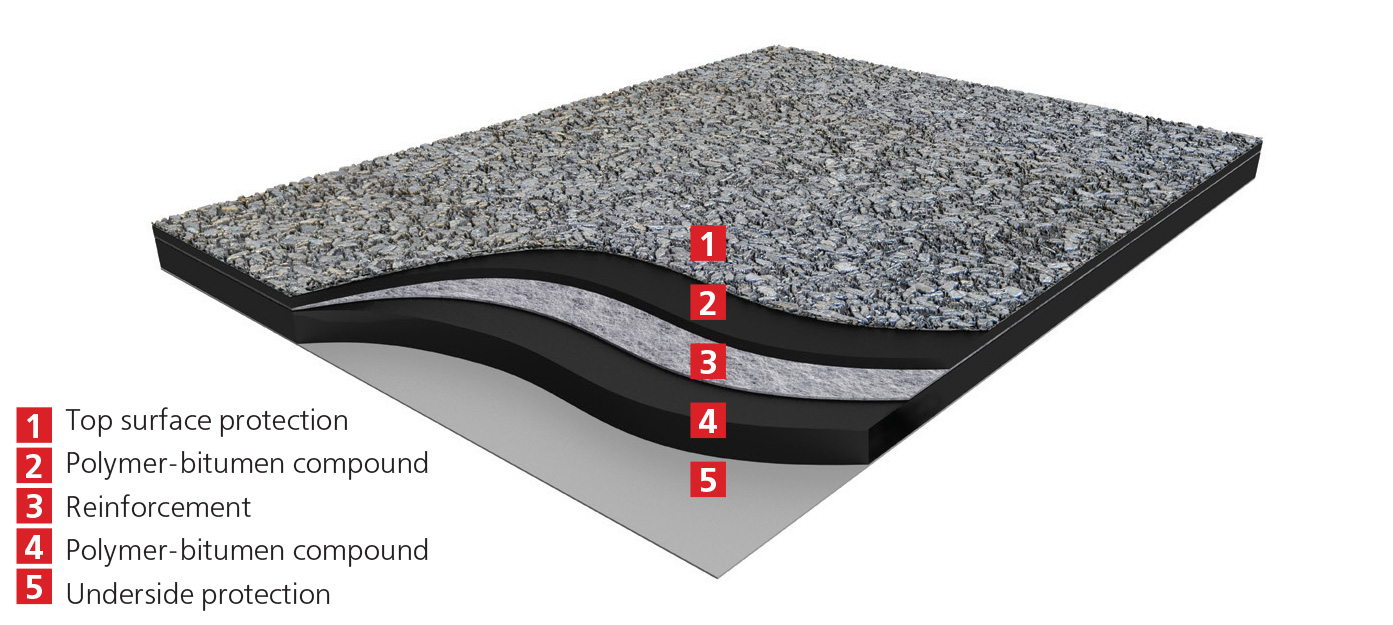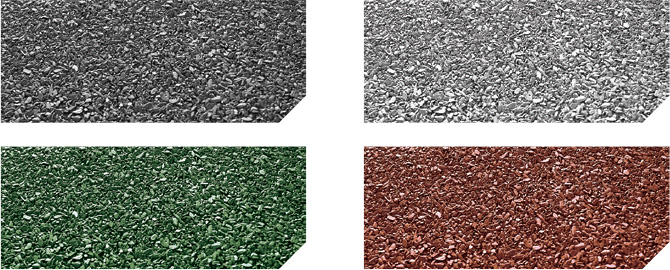More about polymer-bitumen membranes

The most widespread materials for the creation of the waterproofing layer are the polymer-bitumen roll-fed membranes. This is due to the relative simplicity of installation, popularity of the technology, durability of the material and stability of the factory-set technical parameters. Polymer-bitumen membranes are commonly used for waterproofing of foundations, engineering structures, roads, bridge decks and flat roofs. These materials could also be used as an underlay for pitched roofs and as a vapor barrier.
The waterproofing membrane not only protects the internal premises from water penetrating inside, reducing their operating ability, disturbing the process equipment operation and worsening the microclimatic conditions indoors, but it also prevents the destruction of the foundation and supporting structures. Therefore, the correct selection and installation of the waterproofing membrane also ensure the durability of the whole facility.
Polymer-bitumen membranes undergo effects of many unfavourable factors from the external environment. Changes in the surrounding temperature can cause deformations of the material and the base on which it is installed. The ability to withstand such deformations is the most important characteristic of roofing and waterproofing material and it depends on many components used on the production stage.
POLYMER-BITUMEN COMPOUND
The compound is a specially formulated mixture of bitumen and polymers. The main difference between compound types is the kind of polymer used:
- APP polymer provides additional flow resistance that makes it possible to use the material in a very hot climate. The limitation is that the material is less elastic and flexible at low temperatures.
- SBS polymer provides additional flexibility and dynamic resistance to the material. However, it cannot be used in a very hot climate as a cap sheet membrane, because the polymer does not grant high flow resistance to the material.
- Special anti-root additives can be added to the polymer-bitumen compound to make it resistant to root penetration and ensure the reliable waterproofing of green roofs and foundations.
REINFORCEMENT
- Polyester provides excellent elongation properties and grants optimal strength to the material.
- Glass fiber provides additional dimensional stability but does not grant elongation properties.
POLYMER FILM

- Thin polymer film is used for underside surface protection from sticking in the roll. The film is covered with special graphics indicators for easier and more reliable torch-on installation. The film is melting during the heating. If graphics becomes completely fused (surface is all black), the material is overheated. The material is heated properly when graphics is deformed, but visible.
- Polymer film without graphic elements is used as top surface protection of underlay membranes and membranes designed for waterproofing of foundations and engineering structures.
- Perforated polymer film can be used as underside protection to ensure even points of adhesion distribution and increase the speed of installation of the material.
SELF-ADHESIVE SURFACE
The special adhesive polymer-bitumen compound is used for the production of self-adhesive membranes. The compound is covered with easily removable protective film. Self-adhesive materials grant high speed of safe and cheap application and do not require any additional equipment and skills. Such materials can also be used in conditions, when the standard torch-on application is forbidden (expanded / extruded polystyrene or wooden base, indoor waterproofing).
FINE-GRAINED SAND OR TALCUM
Fine-grained sand or talcum can be used to cover the top or underside surface of the membrane. Such type of covering allows installation by hot or cold applied mastics or by torching.
SLATE

The coarse-grained mineral slate with special hydrophobic treatments protects the material from damage by ultraviolet radiation during the whole service life of the membrane. It is used for cap sheet membranes in double-layer waterproofing systems.
Slate can be supplied in various colors that will provide nice aesthetic appearance. Standard colors include natural grey, red, green and white, while other colors are available on request.
SPECIAL COVERING
Eco-friendly product line ENVIRO makes a positive impact on the environment – thanks to the surface with special additives it helps to purify city air, increase energy efficiency of buildings and protect the roof from moss overgrowing. These materials successfully and effectively combine environmental friendliness and technologies aimed at improving living standards and reducing the operation cost of the facility. ENVIRO product line was created with the real care about the future of our planet.

- ENVIRO WHITE is a roofing and waterproofing polymer-bitumen membrane that allows obtaining the effect of “cool roof” thanks to the white slate with high solar reflection used as the top protective layer. As a result, the roof covering is not heated and the premises under the roof (attic or utility room) save comfortable temperature.
- ENVIRO AIR is a roofing and waterproofing polymer-bitumen membrane with a special feature of air purification from harmful nitrogen oxides (NOx) that makes city air much cleaner and safer for human health.
- ENVIRO FOREST is a roofing and waterproofing polymer-bitumen membrane with slate, which is covered with special additives against the overgrowing of the flat roof with moss and vegetation.